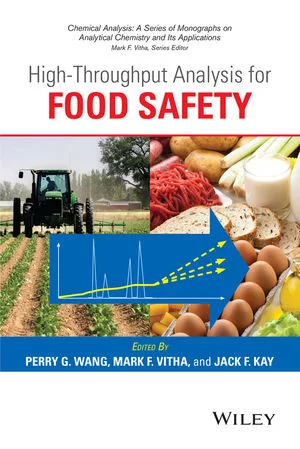EU Data for Foodborne Illnesses in 2021 Shows “Very High” AMR in Campylobacter

Credit: Erik McLean (introspectivedsgn) via Pexels
The European Center for Disease Control and Prevention (ECDC) has released 2021 epidemiological reports for common foodborne illnesses listeriosis, campylobacterosis, hepatitis A infection, Shiga toxin-producing Escherichia coli (STEC) infection, salmonellosis, and yersinosis.
The reports are based on data for 2021 retrieved from The European Surveillance System (TESSy). TESSy is a system for the collection, analysis, and dissemination of data on communicable diseases. Data from the UK is not included in the report, due to the nation’s exit from the EU on January 31, 2020.
The notification of campylobacteriosis is mandatory in 22 EU Member States, Iceland, Liechtenstein, and Norway. In five EU Member States (Belgium, France, Greece, Italy, and the Netherlands), notification is voluntary. The notification of listeriosis in humans is mandatory in all EU/European Economic Area (EEA) Member States except Belgium.
Reporting of hepatitis A was compulsory in all the 30 reporting countries. Twenty-nine countries had a comprehensive hepatitis A surveillance system, and one country (Belgium) did not specify the type of surveillance they undertook. For 2021, 30 EU/EEA countries (27 EU Member States plus Iceland, Liechtenstein, and Norway) reported hepatitis A data to ECDC.
For 2021, data on STEC infections were reported by 30 EU/EEA Member States. Liechtenstein reported for the first time since 2008. The notification of STEC infections is mandatory in all but EU/EEA countries, where notification is either voluntary (Belgium and France) or based on another type of system (Italy).
Yersinosis data were reported by 28 EU/EEA countries. The notification of yersiniosis is mandatory in 24 EU/EEA countries, and there are four where notification is voluntary (Belgium, France, Greece and Italy). No yersiniosis surveillance system exists in Liechtenstein and the Netherlands.
In 2021, 30 EU/EEA countries reported data on salmonellosis. Notification of non-typhoidal salmonellosis is mandatory in most of the EU Member States as well as Iceland, Liechtenstein, and Norway. In three Member States (Belgium, France, and the Netherlands), reporting is voluntary.
Looking for quick answers on food safety topics?
Try Ask FSM, our new smart AI search tool.
Ask FSM →
Listeriosis
Regarding listeriosis, 30 EU/EEA Member States reported 2,268 confirmed cases in 2021, with a 0.44 cases per 100,000 population notification rate. Germany, France, and Italy had the highest numbers of reported cases (560, 435, and 241, respectively), corresponding to 54.5 percent of all cases reported in the EU/EEA. The highest incidence rates were observed in Iceland, Finland, and Denmark. Although a decrease in number of cases was observed at the EU level in 2020, likely due to the COVID-19 pandemic, the overall trend for listeriosis in 2017–2021 did not show a significant decrease or increase.
Additionally, 2021 was the third year of EU/EEA-wide whole genome sequencing (WGS)-enhanced listeriosis surveillance. Microbiological clusters detected from WGS data show that, although multi-country clusters tend to be small and affect only a few Member States (skewed by the low number of Member States submitting data), they also often persist for several years or decades.
In 2021, Listeria monocytogenes was identified as the cause of eight strong-evidence and 12 weak-evidence foodborne illness outbreaks that affected 94 people in the EU, with 38 hospitalizations and nine deaths, as reported to the European Food Safety Authority (EFSA). Four of the strong-evidence outbreaks were caused by fish products (two in the Netherlands and two in Sweden), three by meat products (reported by Austria, Finland, and Sweden), and one by broiler meat in Germany. The number of foodborne outbreaks reported for 2021 was the highest since EFSA first started collecting data, which might be explained by the implementation of high-discrimination typing methods based on WGS that improve outbreak confirmation.
Campylobacterosis
Campylobacteriosis, the most commonly reported gastrointestinal disease in the EU/EEA, is mainly caused by one of two species: C. jejuni or C. coli. In 2021, 30 EU/EEA countries reported 129,960 confirmed cases of campylobacteriosis, with Liechtenstein reporting cases for the first time. The overall EU/EEA notification rate was 44.5 cases per 100,000 population. Additionally, Campylobacteriosis shows clear seasonality, with a sharp peak of cases in the summer months and a smaller peak at the beginning of the year.
Overall, 2021 saw a 5.6 percent increase in confirmed cases of campylobacteriosis in comparison to 2020. Between 2017 and 2021, Czechia, Germany, and Spain accounted for 12.5 percent, 36.9 percent, and 8.7 percent, respectively, of all confirmed cases in the EU/EEA during the five-year period. The overall EU/EEA notification rate in 2021 was 44.5 cases per 100,000 population. The number of reported deaths attributed to campylobacteriosis was 26 in 2021.
The countries with the highest notification rates were Czechia and Slovakia. The lowest rates were reported in Bulgaria, Cyprus, Greece, Poland, and Romania. Compared with 2017, the most notable reductions (greater than or equal to 50 percent) in notification rates were reported in Belgium, Finland, Iceland, Lithuania, and Sweden.
In 2021, 249 foodborne outbreaks caused by Campylobacter were reported in the EU, involving 1,051 cases, 134 hospitalizations, and six deaths. Of 20 outbreaks with strong evidence, seven were caused by broiler meat or broiler products and three by bovine meat or meat products.
Poultry slaughterhouse hygiene is monitored in the EU. Data from such monitoring efforts revealed that, in 2021, almost half of official control samples—42.1 percent—were positive for Campylobacter, and 18.4 percent exceeded the limit of 1,000 colony forming units per gram (cfu/g).
A total of 24 EU/EEA countries reported antimicrobial resistance data (AMR) for Campylobacter in 2021, with 22 nations reporting phenotypic AMR data and two countries reporting AMR predicted from WGS. AMR of Campylobacter in humans was very high in 2021, particularly for fluoroquinolones and tetracyclines. However, combined resistance to both of the critically important antimicrobial classes, fluoroquinolones and macrolides, was low, with some exceptions by country. Similar results were observed in C. jejuni from poultry.
Hepatitis A Infection
In 2021, 30 EU/EEA countries reported 3,864 cases of hepatitis A, with a notification rate of 0.9 cases per 100,000 population. Of the reporting EU/EEA countries 21, had notification rates below one case per 100,000 population. The countries with the highest notification rates were Bulgaria (10.5 cases per 100,000 population), Liechtenstein (5.1) and Romania (4.5).
In 2021, both the number of reported cases and the EU/EEA notification rate were at their lowest since the beginning of EU-level hepatitis A surveillance in 2007, likely due to the COVID-19 pandemic.
In addition to reporting via TESSy, information from event-based surveillance for hepatitis A clusters or outbreaks with potential implications for the EU/EEA was collected through the European surveillance portal for infectious diseases, EpiPulse. in 2021, six multi-country clusters of hepatitis A were reported to EpiPulse. Three clusters involved the hepatitis A sub-genotype IA virus and were possibly linked to the consumption of fresh or frozen berries. The source of infection for the remaining clusters was not identified.
STEC Infection
In 2021, STEC was the fourth most commonly reported foodborne zoonotic disease in the EU/EEA, and was the third most frequent bacterial cause of food- and waterborne outbreaks in the EU reported to EFSA. STEC outbreaks involved 275 cases in 36 outbreaks across 11 Member States. A food vehicle was reported in five strong-evidence foodborne outbreaks; one outbreak of STEC O26 was caused by raw cow milk, pre-cut vegetables caused an outbreak of STEC O103, bovine meat (minced meat and carpaccio) caused two O157 outbreaks, and in one outbreak caused by “meat and meat products” the serotype was not specified.
For 2021, 30 EU/EEA countries reported 6,534 confirmed cases of STEC infection; 27 countries reported at least two confirmed cases, and three countries reported no cases. The overall notification rate was 2.2 cases per 100,000 population. The highest notification rates were reported in Ireland, Denmark, Malta, and Norway, with 17.5, 15.9, 13.2, and 8.1 cases per 100,000 population, respectively. Germany and Ireland accounted for 38 percent of cases across the EU/EEA. Of the 2,575 STEC cases with known information, 41 percent resulted in hospitalization, and 18 of 4,625 cases with a known outcome resulted in fatality.
After a significant decline in notification rates in 2020, primarily as a result of the COVID-19 pandemic, the EU/EEA notification rate increased to the pre-pandemic level in 2021. Additionally, a clear seasonal trend in the number of confirmed STEC cases was observed between 2017 and 2021, with more cases reported from June–September. In 2021, the number of reported cases was higher than the average compared to the same month in 2017−2020 for all months except January–February and May.
Information on STEC serogroups was reported by 23 countries for 3,642 cases (55.7 percent) in the EU/EEA in 2021. The five most frequently reported serogroups were O157 (15.1 percent), O26 (14.7 percent), O103 (8.4 percent), O145 (4.6 percent), and O146 (3.7 percent). Together, the serogroups accounted for 46.5 percent of the confirmed STEC cases with known serogroups in 2021. Among Hemolytic Uremic Syndrome (HUS) cases, serogroup O26 was most commonly reported (34 percent) followed by O157 (19.8 percent).
Yersinosis
In 2021, yersiniosis was the third most commonly reported foodborne zoonotic disease in the EU/EEA after campylobacteriosis and salmonellosis. From 2017–2019, the overall EU/EEA trend of reported cases of yersiniosis remained stable before decreasing considerably in 2020, likely as a result of the COVID-19 pandemic, and to a lesser extent, the withdrawal of the UK from the EU. In 2021, the trend increased, and the number of reported cases was comparable to before the pandemic.
Among the two pathogenic Yersinia species that were notified at EU/EEA level, Y. enterocolitica caused the majority of human infections, followed by Y. pseudotuberculosis. The main reservoir for Y. enterocolitica is the domestic pig, and the pathogenic Y. enterocolitica serotypes most commonly reported in human infections are frequently found in pork products.
Y. pseudotuberculosis is a rare cause of human foodborne infections, but when cases occur these typically take the form of outbreaks. Contaminated vegetables have been the major vehicle of infection in such outbreaks, particularly root vegetables with a long period of cold storage. In recent years, outbreaks of Y. enterocolitica linked to vegetables have also been reported, suggesting that sources other than pork may play a role.
In 2021, 25 yersiniosis outbreaks were reported to EFSA. The number of outbreaks reported in 2021 was relatively stable compared with 2020 and the pre-pandemic years. These outbreaks involved 125 cases in 11 countries. Y. enterocolitica was the species identified as the cause in all the outbreaks. Four strong-evidence outbreaks with a known vehicle of infection were notified involving fruit/berries, vegetables, or iceberg lettuce as a vehicle in three outbreaks, and pig meat in one outbreak.
Salmonellosis
In 2021, 30 EU/EEA countries reported 61,236 salmonellosis cases, of which 60,494 were classified as laboratory-confirmed. This was an increase of 14 percent compared to 2020. The number of cases per 100,000 population was 16.6, which was higher than in 2020 but still lower than pre-pandemic levels.
The highest notification rates were reported by Czechia (93.7 cases per 100,000 population) and Slovakia (81.3), followed by Malta (48.2), Hungary (33.9), and France (28.7). The lowest rates were reported by Greece and Romania (2.7 cases per 100,000 population), as well as Bulgaria, Ireland, and Portugal (3.5 cases per 100,000 population). The hospitalization status was reported for 31,357 salmonellosis cases in 2021, and of those, 38 percent resulted in hospitalization. Out of 38,981 cases with a known outcome, 73 were fatal. There is a clear seasonal distribution of salmonellosis cases by month of reporting, with a peak in July–September.
Information on Salmonella serovars and serogroups was available for 87 percent of the confirmed cases from the EU/EEA countries (Bulgaria and Poland did not report case-based serovar data). As in previous years, the three most commonly reported Salmonella serovars in 2021 were S. Enteritidis (54 percent), S. Typhimurium (11 percent) and monophasic S. Typhimurium.
Additionally, 26 EU/EEA countries reported AMR data for Salmonella for 2021, and 15 countries provided WGS data for centralized analysis to support ongoing multi-country outbreak investigations. AMR was commonly observed in Salmonella isolates from humans in 2021, with multidrug resistance in 23 percent of the isolates. Among the investigated serovars, multidrug resistance was most common in monophasic S. Typhimurium (78 percent), S. Kentucky (55 percent), and S. Infantis (38 percent).
However, only a small fraction (0.8 percent) of the pathogen was resistant to both the critically important antimicrobial classes for treatment—fluoroquinolones and third-generation cephalosporins. An increasing proportion of isolates was observed to be resistant to fluoroquinolones in 12 countries in the period 2017–2021, particularly visible in S. Enteritidis.
Update, January 4, 2022: The article was edited to reflect additional information.









